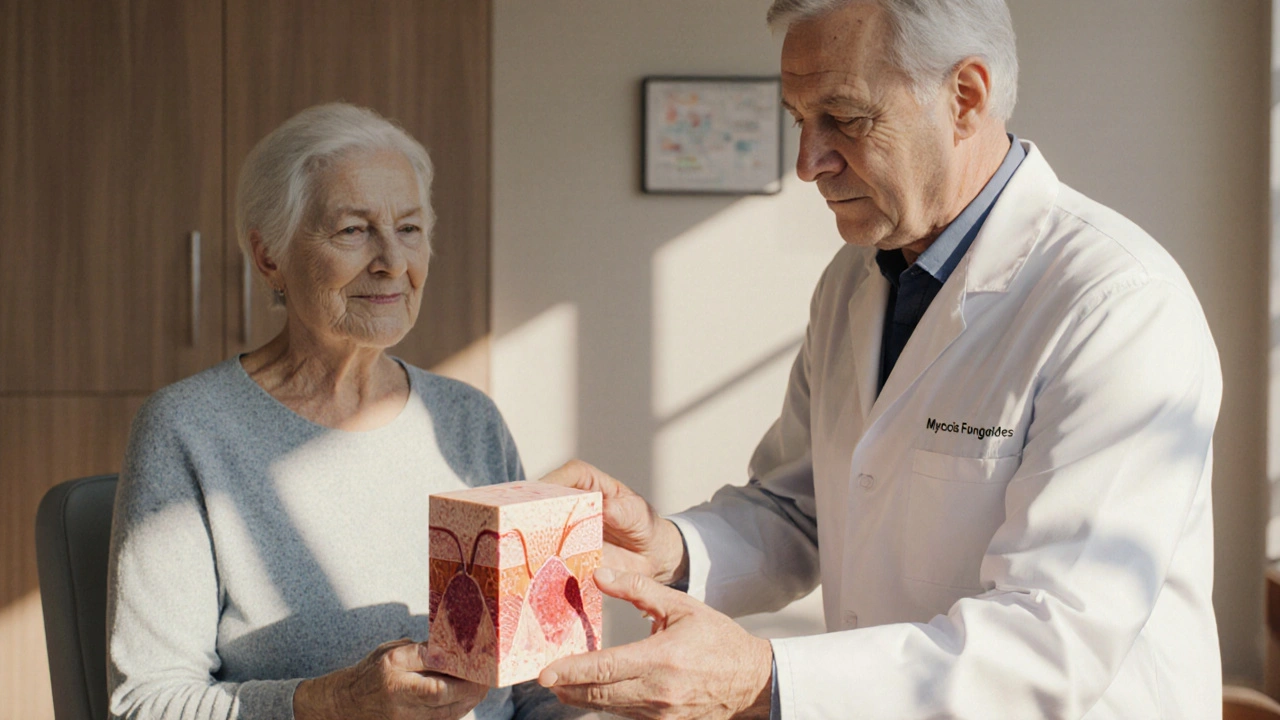Mycosis Fungoides Overview
When dealing with Mycosis Fungoides, a rare form of cutaneous T‑cell lymphoma that starts as skin patches and can advance to tumors. Also known as MF, it belongs to Cutaneous T‑Cell Lymphoma, the broader group of skin‑based lymphomas and may evolve into Sézary syndrome, the leukemic variant with circulating malignant T‑cells. Standard care often includes Phototherapy, UV‑based treatment that targets skin lesions. Mycosis Fungoides typically appears in adults and demands ongoing monitoring.
Key Aspects of Mycosis Fungoides
Diagnosis starts with a skin biopsy; Mycosis Fungoides requires histopathology and immunohistochemistry to confirm malignant T‑cell infiltrates. Staging follows the TNM system, where tumor burden, node involvement, and blood involvement shape the disease category. Early‑stage disease (patches or plaques) often responds to topical steroids, nitrogen mustard, or low‑dose phototherapy, while advanced stages may need systemic agents such as retinoids, interferon‑α, or newer biologics like brentuximab vedotin. Severity of Mycosis Fungoides influences choice of systemic therapy, and treatment goals shift from symptom control to disease modification as the disease progresses. Patients frequently report itching, scaling, and color changes; these symptoms can affect quality of life, so multidisciplinary care—including dermatology, oncology, and psychosocial support—is essential.
Research continues to uncover genetic mutations and immune pathways driving Mycosis Fungoides, opening doors to targeted therapies and checkpoint inhibitors. Staying informed about clinical trials can provide access to cutting‑edge options. Below you’ll find a curated collection of articles that dive deeper into specific drugs, resistance issues, and practical tips for managing related conditions. Whether you’re looking for treatment comparisons, safety guides, or the latest insights on skin‑related cancers, the posts ahead will equip you with actionable knowledge to navigate this complex disease.

Mycosis Fungoides Myths: Facts, Truths & Real Treatment Insights
Clearly separates myths from facts about Mycosis Fungoides, explains staging, diagnosis, modern treatments, and offers practical advice for patients.
